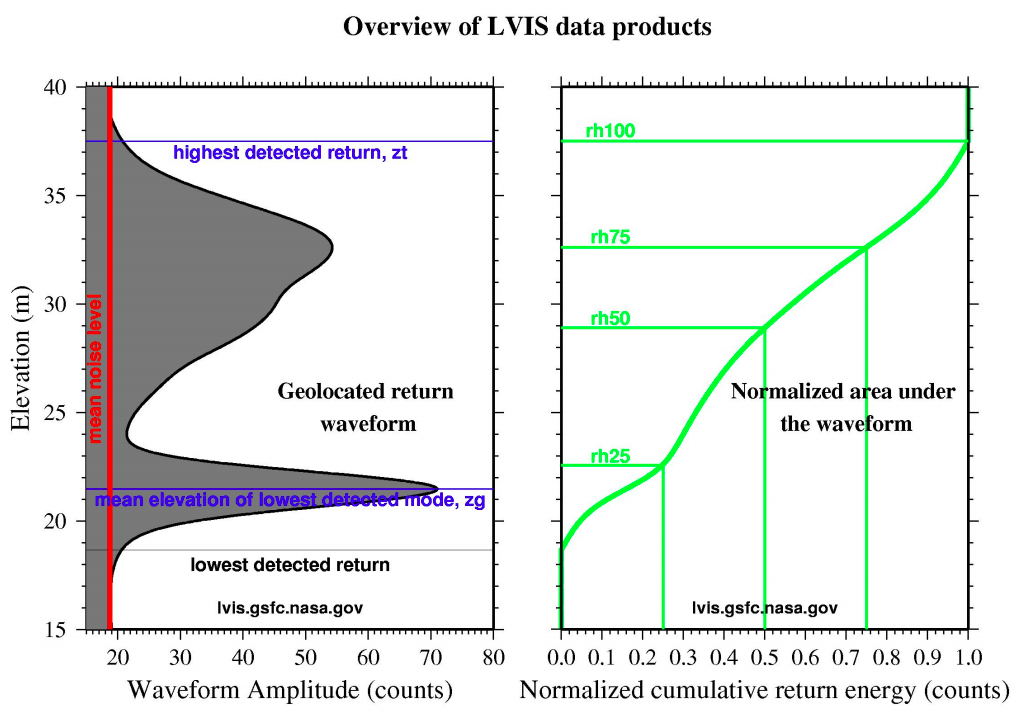LVIS data products rely on information contained in the geolocated laser return waveform (the LVIS Level 1B product).
Locations of several modes and reflecting points are extracted using signal processing methods, then geolocated using the infomation in the L1B file, and
and output in the Level 2 product files. These include elevations (with assoicated latitudes and longitudes) for the center of the lowest
and highest modes in the waveform as well as the highest detected return (e.g., canopy top). We also integrate the energy contained
within the waveform and extract out the locations where, for example, 25, 50, and 75% of the total return energy occurs.
These are also geolocated relative to a global reference frame then differenced to the zg product to derive a relative height (e.g, RH25).
An overview of some of the products contained in the Level1b and Level2 products is shown below.

Although we provide standard products for each footprint, it is left to the end user to pick which product may be more appropriate for their use.
For example, in simple, non-complex terrain such as the smooth interior of an ice sheet, the "low" and "high" surfaces will be identical
since the laser return waveform will only contain one ~gaussian mode. However, over more complex terrain, for example,
crevassed or rocky surfaces where multiple reflecting modes occur within the laser footprint, these two surfaces will occur at different elevations.
Some Level 2 data formats also contain the elevation corresponding to the centroid of the return signal, however the user must be cognizant of the
impact of the shape of the returning laser pulse if using this elevation.
LVIS has been collecting data since 1997 for various objectives, and several evolutions of the data product structure have occurred.
With the start of the LVIS Facility in 2017 we have standardized the data format and begun reissuing data.
Camera Imagery
For flights with associated camera imagery, we have modified the Exif tag structure to include time, position and pointing infomation.
These images are available both in a reduced version within a Google Earth KMZ file and as full resolution JPEGs.



